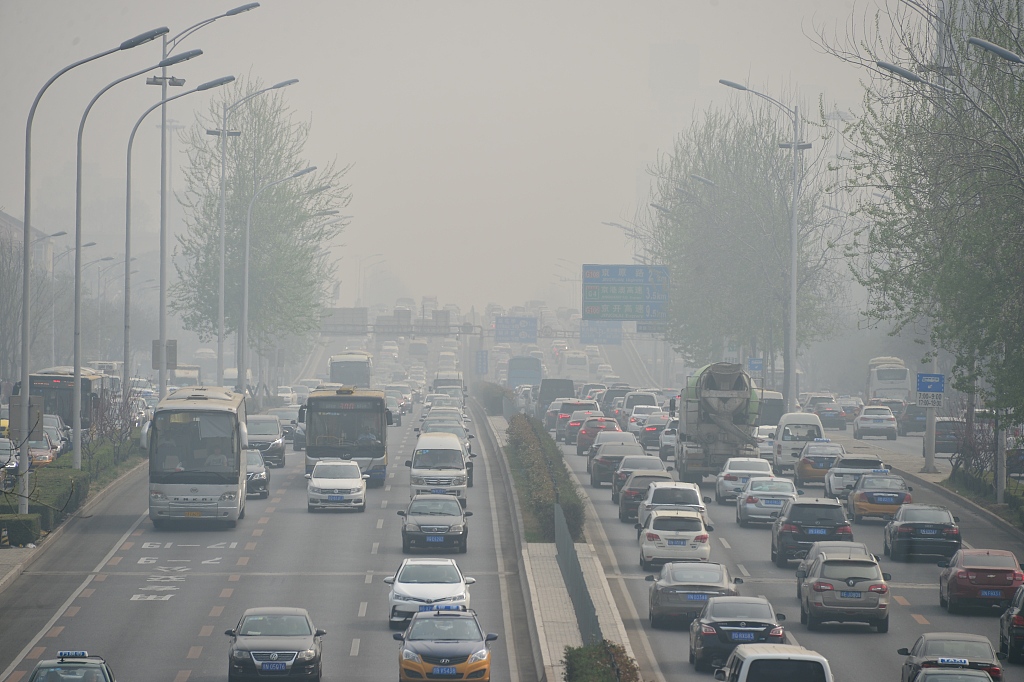BEIJING, Oct. 19 (Xinhua) -- Beijing's environmental bureau proposed to scrap the lowest blue alert for smog and relaxed the trigger for its orange alert, as the municipality sees more clear days in recent years.

Smog in Beijing (Photo: VCG)
The current air pollution alert system was published in 2016. It has a four-tier color alert system, with red being the highest pollution level, followed by orange, yellow and blue.
The yellow alert and above will trigger a series of compulsory emergency responses including the suspension of construction operations, the restriction of heavy pollution vehicles or the suspension of production in smokestack industries.
The blue alert means the air quality index (AQI) is forecast to reach between 200 and 300 PM2.5 for one day. According to the new plan, the alert will be replaced by a health reminder.
The orange alert was triggered when the AQI surpasses 200 for three days with at least one day above 300. The new plan deleted the condition that requires one day of AQI above 300.
The new plan also noted that regulators will make more differentiated plans for different industrial enterprises to avoid a "one-size-fits-all" method in curtailing the output of polluting industries.
The average density of PM2.5 in Beijing during the first seven months of this year was 55 micrograms per cubic meter, down 14.1 percent from the same period last year.
In 2017, the number was 58 micrograms per cubic meter in Beijing, 20.5 percent less than in 2016.


